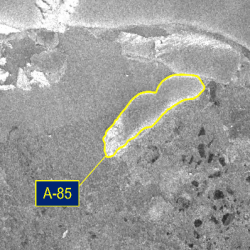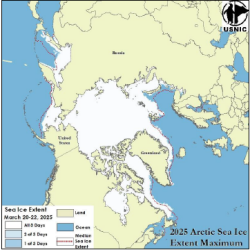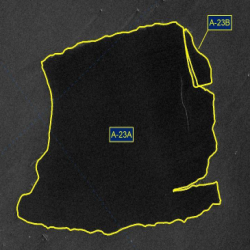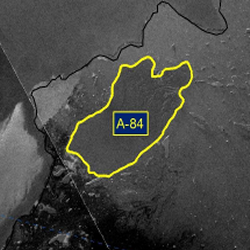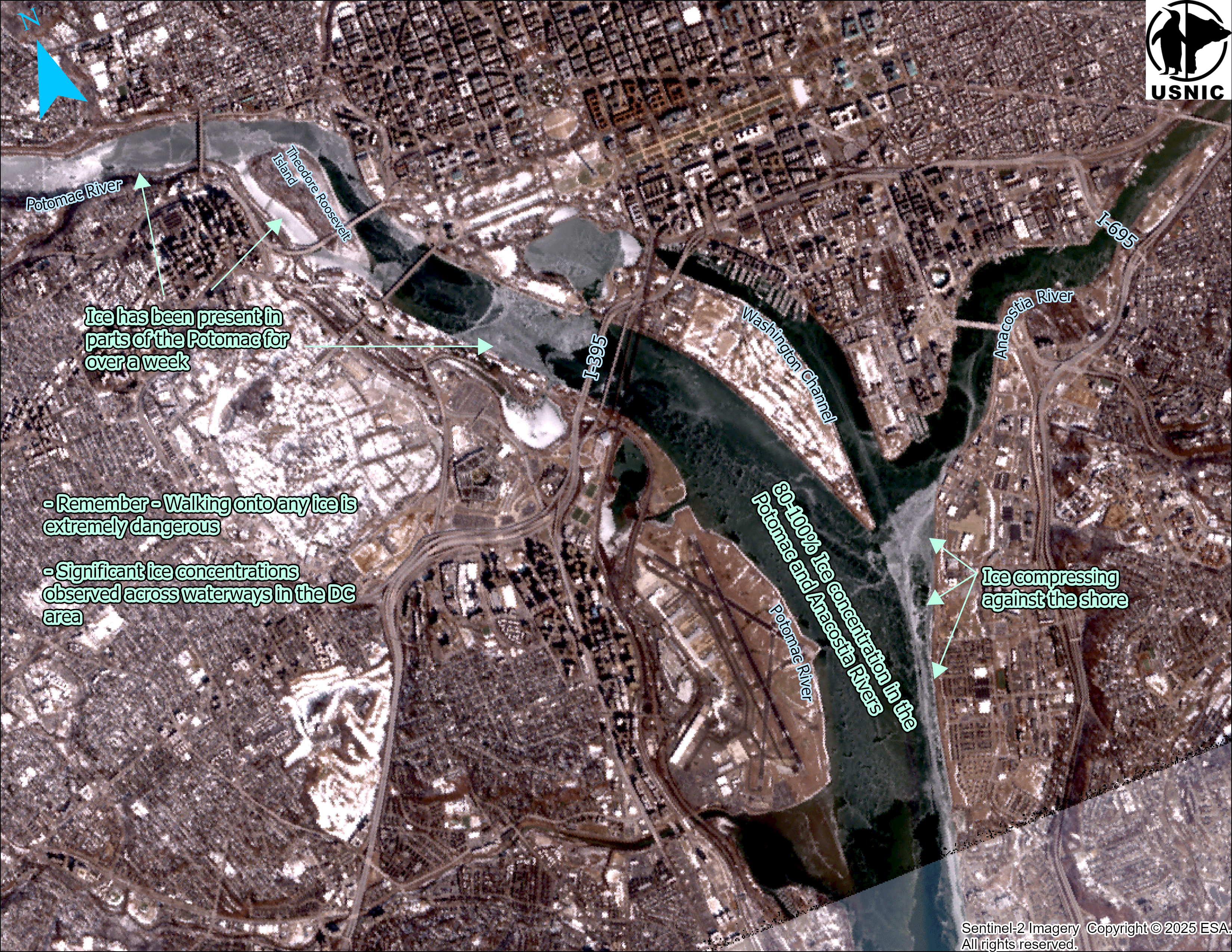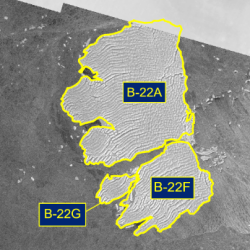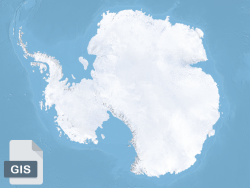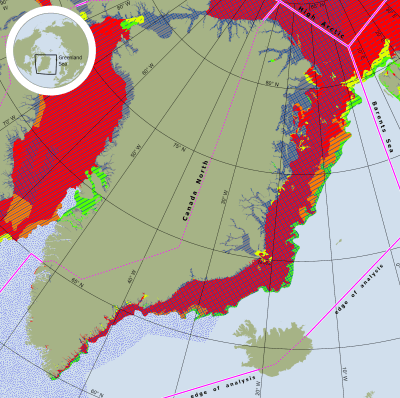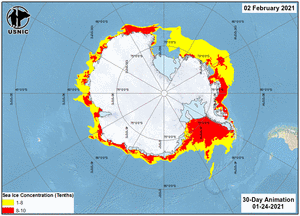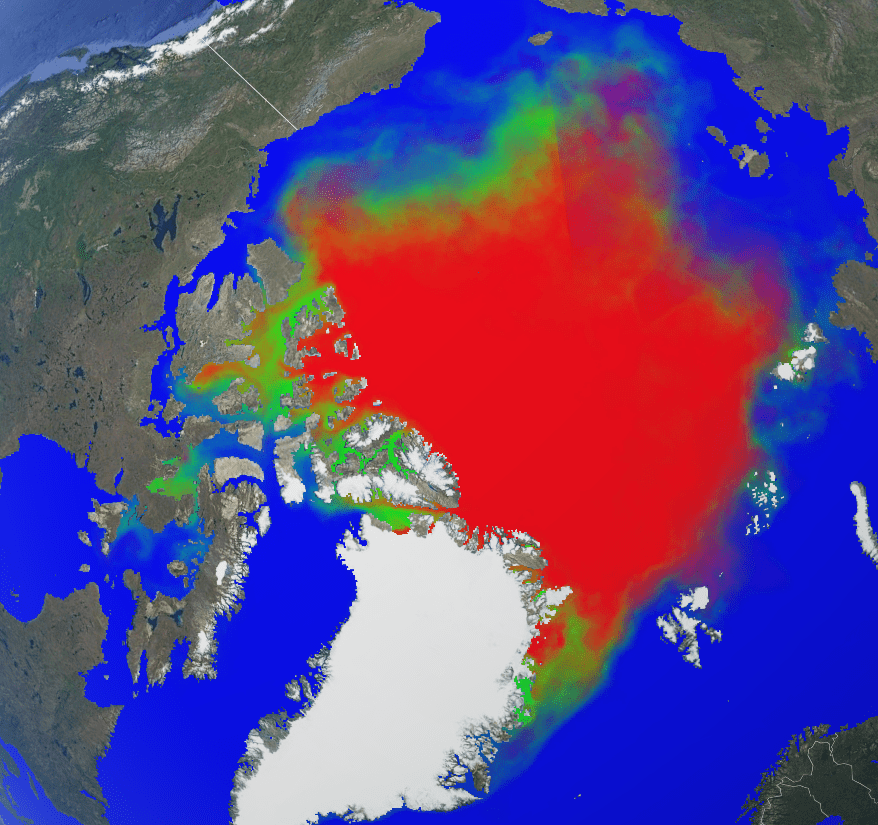Latest News
Iceberg D-36B Has Calved from Iceberg D-36A
The U.S. National Ice Center (USNIC) has confirmed that iceberg D-36B calved from D-36A in the southern Amery Sea. As of April 15, D-36A was centered at 66° 18' South and 86° 33' East and measured 6 nautical miles on its longest axis and 5 nautical miles on its widest axis. D-36B was centered at 66° 15' South and 86° 44' West and measured 9 nautical miles on its longest axis and 2 nautical miles on its widest axis. D-36A first calved from the West Ice Shelf in 2024.
Iceberg D-37 Has Calved From Roi Baudouin Ice Shelf
The U.S. National Ice Center (USNIC) has confirmed that iceberg D-37 calved from the Roi Baudouin Ice Shelf. As of February 20, D-37 was centered at 69° 12' South and 36° 20' East and measured 30 nautical miles on its longest axis and 7 nautical miles on its widest axis.
Iceberg A-85 Has Calved From Ronne Ice Shelf
The U.S. National Ice Center (USNIC) has confirmed that iceberg A-85 calved from the Ronne Ice Shelf. As of February 19, A-85 was centered at 77° 30' South and 48° 32' West and measured 10 nautical miles on its longest axis and 3 nautical miles on its widest axis.
Arctic Sea Ice at Maximum Extent
The U.S. National Ice Center (USNIC) has determined the 2025 maximum Arctic sea ice extent occurred in mid-March 2025 with an area of 14.47 million square kilometers. This estimate is based on the Multisensor Analyzed Sea Ice Extent (MASIE) product, which is created jointly with the National Snow and Ice Data Center (NSIDC), and is ultimately derived from analysis on the USNIC’s Interactive Multisensor Snow and Ice Mapping System (IMS).
Iceberg A-23B Has Calved from Iceberg A-23A in the northern Weddell Sea
The U.S. National Ice Center (USNIC) has confirmed that iceberg A-23B calved from A-23A in the northern Weddell Sea. As of January 31, A-23A was centered at 56° 47' South and 40° 19' West and measured 40 nautical miles on its longest axis and 32 nautical miles on its widest axis.
Iceberg A-84 Has Calved From George VI ice shelf
The U.S. National Ice Center (USNIC) has confirmed that iceberg A-84 calved from the George VI ice shelf. As of January 31, A-84 was centered at 72° 41' South and 75° 48' West and measured 16 nautical miles on its longest axis and 9 nautical miles on its widest axis.
With the colder temperatures observed over the DC region, significant ice formation has been observed across waterways in the area. Remember, walking on ice is extremely dangerous - ice can be unpredictable and subject to breakup and movement with no warning. View Safety on Ice poster.
Sentinel-2 satellite imagery shows ice across the DC region. The thickest ice is observed behind the I-395 bridge and along parts of the eastern shore near the intersection of the Anacostia and Potomac Rivers. Significant ice was first observed in the region over two weeks ago and began as primarily diurnal (nighttime) ice but has since greatly expanded in coverage and been consistently present throughout the day. As temperatures warm up through the weekend, ice concentrations are expected to decrease.
Arctic Sea Ice at Minimum Extent
The U.S. National Ice Center (USNIC) has determined the 2024 minimum Arctic sea ice extent occurred in late-September 2024 with an area of 4.42 million square kilometers based on analysis from the USNIC’s Interactive Multisensor Snow and Ice Mapping System (IMS), used in the Multisensor Analyzed Sea Ice Extent (MASIE) product, jointly created with the National Snow and Ice Data Center (NSIDC).
Icebergs B-22F and B-22G Have Calved from B-22A in the Amundsen Sea
The U.S. National Ice Center (USNIC) has confirmed that icebergs B-22F and B-22G calved from iceberg B-22A in the Amundsen Sea. As of August 15th, B-22A was centered at 72°41' South and 126°14' West and measured 33 nautical miles on its longest axis and 26 nautical miles on its widest axis.
Featured Products
Antarctic Ice Shelf
Antarctic ice shelf has been updated to the 2022 version and is available in GIS shapefile format.
Regional Synopsis
The U.S. National Ice Center has developed a new series charts. Regional Synopsis charts breaks out each region of the Arctic and Antarctic into a high quality regional charts along with an environment synopsis write-up. Charts will be updated weekly. Please take a look.
Animated Charts
Added animated charts of our Arctic and Antarctic MIZ, and IMS snow and ice charts.
Trivariate Products
A comprehensive look at ice conditions over a period time, from a single year to a comparison set starting from 2007. Produced for the Arctic and Antarctic.

